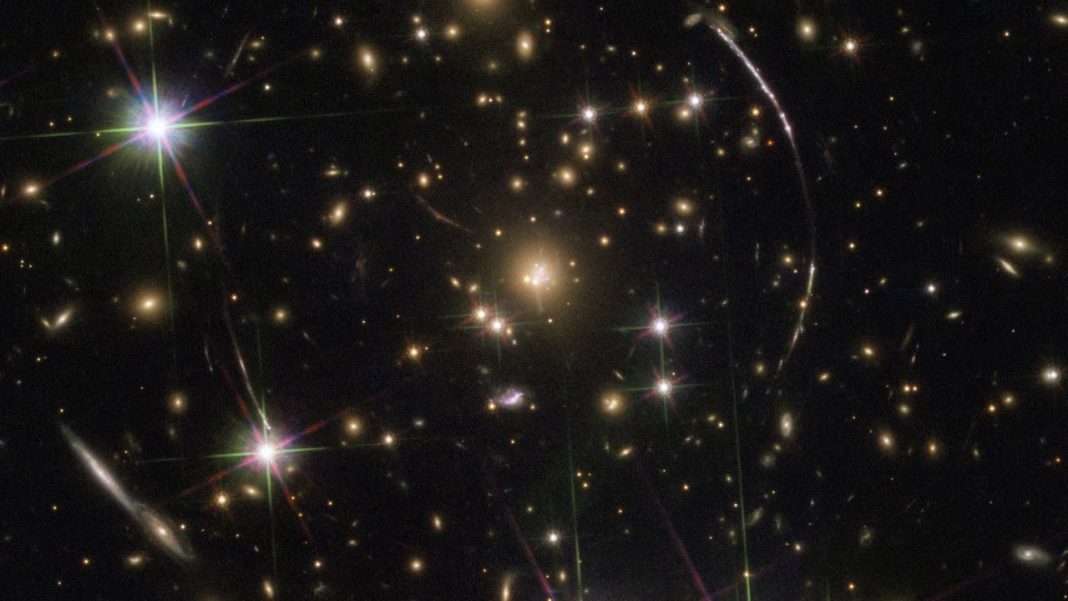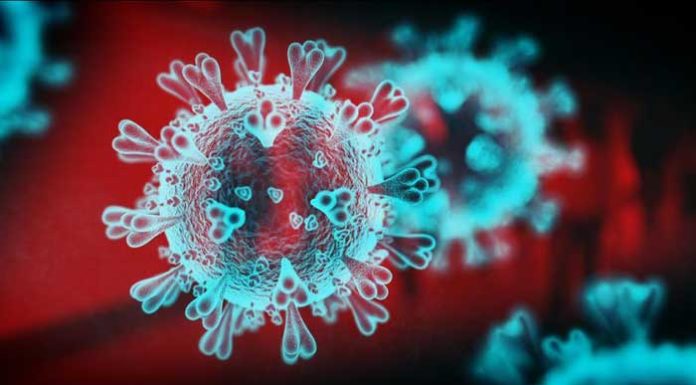NASA’s Hubble Captures a Dozen Galaxy Doppelgangers
The “funhouse mirror” has delighted carnival-goers for more than a century by twisting peoples’ images into wildly distorted shapes. Its prolific inventor, Charles Frances Ritchel, called it the “Ritchel’s Laugh-O-Graphs.” However, there was nothing funny – but instead practical – about warped images as far as Albert Einstein was concerned. In developing his general theory of relativity, Einstein imagined the universe as a grand funhouse mirror caused by wrinkles in the very fabric of space.
This recent picture from Hubble shows a galaxy nicknamed the “Sunburst Arc” that has been split into a kaleidoscope illusion of no fewer than 12 images formed by a massive foreground cluster of galaxies 4.6 billion light-years away.
This beautifully demonstrates Einstein’s prediction that gravity from massive objects in space should bend light in a manner analogous to a funhouse mirror. His idea of space warping was at last proven in 1919 by observations of a solar eclipse where the sun’s bending of space could be measured. A further prediction was that the warping would create a so-called “gravitational lens” that, besides distortion, would increase the apparent size and brightness of distant background objects.
It wasn’t until 1979 that the first such gravitational lens was confirmed. An otherwise obscure galaxy split and amplified the light of a distant quasar located far behind it into a pair of images. Far more than a space-carnival novelty, gravitational lensing observations today are commonly used to find planets around other stars, zoom in on very distant galaxies, and map the distribution of otherwise invisible “dark matter” in the universe.













![Hotstar Premium Cookies 2019 [*100% Working & Daily Updated*] Hotstar Premium Cookies 2019 [*100% Working & Daily Updated*]](https://tahav.com/wp-content/uploads/2019/11/Hotstar-Premium-Cookies-Free-100x70.jpg)



